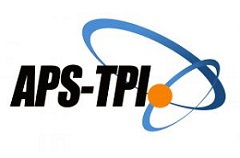Blended Learning Implementation and Impact in Vocational Schools
Abstract
Keywords
Full Text:
PDFReferences
Al lHassan, Sarah; Shukri, N. (2017). The Effect of Blended Learning in Enhancing Female Students Satisfaction in the Saudi Context. Canadian Center of Science and Education, 10(6), 190–203. https://files.eric.ed.gov/fulltext/EJ1143465.pdf
Banditvilai, C. (2016). Enhancing Students’ Language Skills through Blended Learning. Electronic Journal of E-Learning. https://doi.org/10.1504/IJTEL.2012.051816
Boelens, R., De Wever, B., & Voet, M. (2017). Four key challenges to the design of blended learning: A systematic literature review. In Educational Research Review. https://doi.org/10.1016/j.edurev.2017.06.001
Charitopoulos, A., Vassiliadis, S., Rangoussi, M., & Koulouriotis, D. (2017). E-learning and blended learning in textile engineering education: A closed feedback loop approach. IOP Conference Series: Materials Science and Engineering. https://doi.org/10.1088/1757-899X/254/22/222002
Chen, W. S., & Tat Yao, A. Y. (2016). An Empirical Evaluation of Critical Factors Influencing Learner Satisfaction in Blended Learning: A Pilot Study. Universal Journal of Educational Research. https://doi.org/10.13189/ujer.2016.040719
Deutscher, V., & Winther, E. (2018). Instructional sensitivity in vocational education. Learning and Instruction. https://doi.org/10.1016/j.learninstruc.2017.07.004
Dewi, K. C., Ciptayani, P. I., & Surjono, H. D. (2018). Modeling Vocational Blended Learning Based on Digital Learning Now Framework. Turkish Online Journal of Educational Technology - TOJET.
Dziuban, Charles; Graham, Charles; Moskal, Patsy; Norberg, Anders & Sicilia, N. (2018). Blended Learning: The New Normal and Emerging Technologies. International Journal of Educational Technology in Higher Education, 15(3). https://doi.org/https://doi.org/10.1186/s41239-017-0087-5
Effendi, Z. M. (2016). Efektifitas Blended Learning Dalam Meningkatkan Akses Belajar Di LPTK. KONASPI VIII, 1–5. https://doi.org/https://doi.org/10.31227/osf.io/sha36
Fuller, A. (2015). Vocational Education. In International Encyclopedia of the Social & Behavioral Sciences: Second Edition. https://doi.org/10.1016/B978-0-08-097086-8.92091-9
Hajji, M., Bouzaidi, R. D., Douzi, H., & Khouya, E. H. (2016). New blended learning strategy based on flipped-learning for vocational work-linked training. Journal of Education and Practice.
Han, F., & Ellis, R. A. (2019). Identifying consistent patterns of quality learning discussions in blended learning. Internet and Higher Education. https://doi.org/10.1016/j.iheduc.2018.09.002
Harususilo, Y. E. (2018, May 2). Ki Hadjar Dewantara dan “Guncangan” Pendidikan Era Industri 4.0. Kompas.Com. https://edukasi.kompas.com/read/2018/05/02/15561621/ki-hadjar-dewantara-dan-guncangan-pendidikan-era-industri-40
Hockly, N. (2018). Blended Learning. ELT Journal, 72(1), 97–101. https://doi.org/https://doi.org/10.1093/elt/ccx058
Hofmann, J. (2018). Blended Learning (What Works in Talent Development) (What Works). ATD Press.
Inggriyani, Feby; Hamdani, Acep; Dahlan, T. (2019). Minat Belajar Mahasiswa dengan Menggunakan Blended Learning melalui Google Classroom pada Pembelajaran Konsep Dasar Bahasa Indonesia SD. PEMBELAJAR: Jurnal Ilmu Pendidikan, Keguruan, Dan Pembelajaran, 3(1), 28–35. https://ojs.unm.ac.id/pembelajar/article/view/8649/pdf
Jachin, N., & Usagawa, T. (2017). Potential Impact of Blended Learning on Teacher Education in Mongolia. Creative Education. https://doi.org/10.4236/ce.2017.89104
Kamasheva, Y. L., Goloshumova, G. S., Goloshumov, A. Y., Kashina, S. G., Pugacheva, N. B., Bolshakova, Z. M., Tulkibaeva, N. N., & Timirov, F. F. (2016). Features of vocational education management in the region. International Review of Management and Marketing.
Kintu, M. J., Zhu, C., & Kagambe, E. (2017). Blended learning effectiveness: the relationship between student characteristics, design features and outcomes. International Journal of Educational Technology in Higher Education. https://doi.org/10.1186/s41239-017-0043-4
Kristanto, A., Mustaji, M., & Mariono, A. (2017). The Development of Instructional Materials E-Learning Based On Blended Learning. International Education Studies. https://doi.org/10.5539/ies.v10n7p10
Kulkarni, T. P., Toksha, B. G., Bhosle, S. P., & Deshmukh, B. (2019). Analysing the impact of moodle and its modules on students learning, a case study in mechanical engineering. Journal of Engineering Education Transformations.
Laborda, J. G. (2014). Stein, Jared & Graham, Charles R (2014) Essentials for blended learning Routledge (New York & London) isbn 978-0-415-63616-2 210 pp £19.99 http://www.routledge.com/books/details/9780415636162/. British Journal of Educational Technology. https://doi.org/10.1111/bjet.12177_5
Li, J., Kay, R., & Markovich, L. (2018). Student Attitudes Toward Blended Learning in Adult Literacy and Basic Skills College Programs | Attitudes des étudiants envers l’apprentissage mixte dans les programmes collégiaux de formation de base et alphabétisation pour adultes. Canadian Journal of Learning and Technology / La Revue Canadienne de l’apprentissage et de La Technologie. https://doi.org/10.21432/cjlt27573
Liu, Q., Peng, W., Zhang, F., Hu, R., Li, Y., & Yan, W. (2016). The Effectiveness of Blended Learning in Health Professions: Systematic Review and Meta-Analysis. Journal of Medical Internet Research. https://doi.org/10.2196/jmir.4807
Maarop, A. H., & Embi, M. A. (2016). Implementation of Blended Learning in Higher Learning Institutions: A Review of Literature. International Education Studies. https://doi.org/10.5539/ies.v9n3p41
Machumu, H. J., Zhu, C., & Sesabo, J. K. (2016). Blended Learning in the Vocational Education and Training System in Tanzania: Understanding Vocational Educators’ Perceptions. International Journal of Multicultural and Multireligious Understanding. https://doi.org/10.18415/ijmmu.v3i2.46
Manwaring, K. C., Larsen, R., Graham, C. R., Henrie, C. R., & Halverson, L. R. (2017). Investigating student engagement in blended learning settings using experience sampling and structural equation modeling. Internet and Higher Education. https://doi.org/10.1016/j.iheduc.2017.06.002
Marchalot, A., Dureuil, B., Veber, B., Fellahi, J. L., Hanouz, J. L., Dupont, H., Lorne, E., Gerard, J. L., & Compère, V. (2018). Effectiveness of a blended learning course and flipped classroom in first year anaesthesia training. Anaesthesia Critical Care and Pain Medicine. https://doi.org/10.1016/j.accpm.2017.10.008
Margolis, A. R., Porter, A. L., & Pitterle, M. E. (2017). Best practices for use of blended learning. American Journal of Pharmaceutical Education. https://doi.org/10.5688/ajpe81349
Mohamed-Amin, E., Norazah, M. N. & Ebrahim, P. (2014). Overview of Blended Learning. In E. Mohamed-Amin (Ed.), Blended & Flipped Learning: Case Studies in Malaysian HEIs. Universiti Kebangsaan Malaysia.
Nabi, G., LiñáN, F., Fayolle, A., Krueger, N., & Walmsley, A. (2017). The impact of entrepreneurship education in higher education: A systematic review and research agenda. In Academy of Management Learning and Education. https://doi.org/10.5465/amle.2015.0026
Ng, R. Y. K., Lam, R. Y. S., Ng, K. K., & Lai, I. K. W. (2017). A study of vocational and professional education and training (VPET) students and teachers’ preferred support for technology based blended learning. Proceedings - 2017 International Symposium on Educational Technology, ISET 2017. https://doi.org/10.1109/ISET.2017.66
Nortvig, A. M., Petersen, A. K., & Balle, S. H. (2018). A literature review of the factors influencing e-learning and blended learning in relation to learning outcome, student satisfaction and engagement. Electronic Journal of E-Learning.
Patmanthara, S., & Hidayat, W. N. (2018). Improving Vocational High School Students Digital Literacy Skill through Blended Learning Model. Journal of Physics: Conference Series. https://doi.org/10.1088/1742-6596/1028/1/012076
Porter, W. W., & Graham, C. R. (2016). Institutional drivers and barriers to faculty adoption of blended learning in higher education. British Journal of Educational Technology. https://doi.org/10.1111/bjet.12269
Prodjo, W. A. (2020, February 7). Perguruan Tinggi Bisa Terapkan Kampus Merdeka Lewat 5 Permendikbud. Kompas.Com. https://edukasi.kompas.com/read/2020/02/07/15171541/perguruan-tinggi-bisa-terapkan-kampus-merdeka-lewat-5-permendikbud?page=all
Puri, S. A. (2018). Pengembangan Media Pembelajaran Berbasis Blended Learning Pada Mata Kuliah Tailoring. Jurnal Tata Busana, 07(03), 8–15. https://jurnalmahasiswa.unesa.ac.id/index.php/jurnal-tata-busana/article/view/25281
Rahayu, S. S. (2017). Blended Learning Simulation Based Model Development. American Journal of Educational Research, 5(11), 1114–1119. https://doi.org/10.12691/education-5-11-1
Rajabi H.A; Zandi B; Ekradi E; Shakeri M. (2017). Studying The Effect Of Teaching And Teaching Combined On Students’ Learning; A Case Study Of Technical And Vocational Courses. Research In Teaching, 5(2), 69–81.
Ramirez-Arellano, A., Acosta-Gonzaga, E., Bory-Reyes, J., & Hernández-Simón, L. M. (2018). Factors affecting student learning performance: A causal model in higher blended education. Journal of Computer Assisted Learning. https://doi.org/10.1111/jcal.12289
Setiawan, R., Mardapi, D., Pratama, A., & Ramadan, S. (2019). Efektivitas blended learning dalam inovasi pendidikan era industri 4.0 pada mata kuliah teori tes klasik. Jurnal Inovasi Teknologi Pendidikan. https://doi.org/10.21831/jitp.v6i2.27259
Shamad, Asfiati; Wekke, I. (2019). Lecturers’ Participation in Applying Blended Learning in Islamic Higher Education in Indonesia. Universal Journal of Educational Research, 7(12), 2604–2608. https://doi.org/10.13189/ujer.2019.071207
Siregar, E., & Aswan, D. (2019). Development of Blended Learning for Optimization Courses in Education Technology Master Program. International Conference on Education Technology.
Stapa, M. A., & Mohammad, N. (2019). The Use of Addie Model for Designing Blended Learning Application at Vocational Colleges in Malaysia. Asia-Pacific Journal of Information Technology & Multimedia. https://doi.org/10.17576/apjitm-2019-0801-05
Surjono, Herman; Muhtadi, Ali; Wahyuningsih, D. (2017). The Implementation of Blended Learning in Multimedia Courses for Undergraduate Students in Indonesia. International Journal of Information and Education Technology, 7(10), 783–786. https://www.researchgate.net/profile/Herman_Surjono/publication/312271862_The_Implementation_of_Blended_Learning_in_Multimedia_Courses_for_Undergraduate_Students_in_Indonesia/links/588b2726a6fdcc225a3420bc/The-Implementation-of-Blended-Learning-in-Multime
Thompson, K., Jowallah, R., & Cavanagh, T. B. (2019). “Solve the Big Problems.” https://doi.org/10.4018/978-1-5225-7769-0.ch002
Vanslambrouck, S., Zhu, C., Lombaerts, K., Philipsen, B., & Tondeur, J. (2018). Students’ motivation and subjective task value of participating in online and blended learning environments. Internet and Higher Education. https://doi.org/10.1016/j.iheduc.2017.09.002
Vo, H. M., Zhu, C., & Diep, N. A. (2017). The effect of blended learning on student performance at course-level in higher education: A meta-analysis. Studies in Educational Evaluation. https://doi.org/10.1016/j.stueduc.2017.01.002
Wahyuni & Safitri. (2018). Analisis Faktor-Faktor yang Menentukan Keberhasilan Penerapan Kurikulum 321 pada Pendidikan Vokasi. Prosiding Seminar Nasional Pendidikan Tinggi Vokasi Indonesia. https://scholar.ui.ac.id/en/publications/analisis-faktor-faktor-yang-menentukan-keberhasilan-penerapan-kur
Wong, B. M. (2018). Vocational teachers’ experiences of using an online learning platform [University of Nottingham]. http://eprints.nottingham.ac.uk/52495/
Wong, L., Tatnall, A., & Burgess, S. (2014). A framework for investigating blended learning effectiveness. Education and Training. https://doi.org/10.1108/ET-04-2013-0049
Yick, K. lun, Yip, J., Au, S. chuen, Lai, Y. yan, & Yu, A. (2019). Effectiveness of blended learning in the first year of fashion education. International Journal of Fashion Design, Technology and Education. https://doi.org/10.1080/17543266.2018.1546910
Refbacks
- There are currently no refbacks.





.png)













